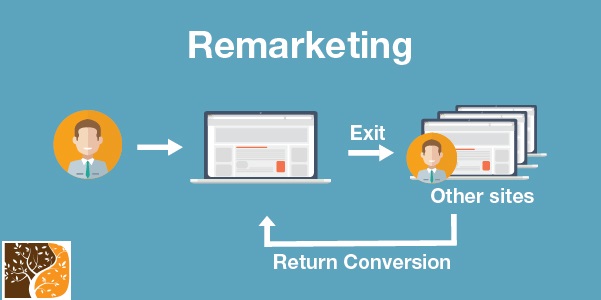In today’s competitive digital landscape, businesses are continually seeking ways to engage customers and increase conversions. One powerful strategy to achieve this is through remarketing. This technique allows you to reconnect with users who have previously interacted with your website or app, reminding them of their interest and encouraging them to return. Here’s a comprehensive guide on how to effectively use remarketing in your digital marketing strategy.

Table of Contents
ToggleWhat is Remarketing?
Remarketing, also known as retargeting, is a form of online advertising that enables you to show ads to users who have previously visited your website or used your app. It targets potential customers who have expressed interest in your products or services but didn’t convert. Remarketing helps keep your brand top-of-mind and encourages users to reconsider their initial decision.
Benefits of Remarketing
- Increased Brand Recall: By displaying ads to users who have already shown interest, you increase the likelihood that they will remember your brand when they are ready to make a purchase.
- Higher Conversion Rates: Remarketing targets warm leads—those who have engaged with your brand. This results in higher conversion rates compared to targeting cold audiences.
- Cost-Effective Advertising: Since you’re targeting users who are already familiar with your brand, remarketing often leads to lower cost-per-click (CPC) and higher return on investment (ROI).
- Customizable Campaigns: Remarketing allows you to create tailored ads based on user behavior, such as pages visited or products viewed, enhancing personalization.
How to Implement Remarketing in Your Digital Marketing Strategy
1. Set Up a Remarketing List
To begin, you need to create a remarketing list. This can be done through platforms like Google Ads or Facebook Ads Manager. Here’s how to do it:
- Google Ads:
- Go to the “Tools and Settings” menu.
- Under “Shared Library,” select “Audience Manager.”
- Click on “+ Remarketing List” and define the criteria for your list, such as website visitors within a specific timeframe.
- Facebook Ads:
- Navigate to the “Audiences” section in Ads Manager.
- Click on “Create Audience” and select “Custom Audience.”
- Choose your source (e.g., website, app, customer list) and define your audience.
2. Create Targeted Ads
Once you have your remarketing list, it’s time to craft compelling ads. Consider the following tips:
- Personalization: Use dynamic ads that showcase products or services users viewed but did not purchase.
- Strong Call-to-Action (CTA): Encourage users to return with clear and compelling CTAs, such as “Complete Your Purchase” or “Check Out Our New Arrivals.”
- Engaging Visuals: Use eye-catching images or videos that resonate with your audience and highlight your brand’s unique selling points.
3. Choose the Right Platforms
Select the platforms where you will run your remarketing campaigns. Popular options include:
- Google Display Network: Reach users across millions of websites and apps with banner ads.
- Social Media: Utilize platforms like Facebook, Instagram, and LinkedIn to target users who have previously engaged with your brand.
4. Set Frequency and Duration
Manage how often and for how long your ads are displayed to users. This prevents ad fatigue and ensures your audience remains engaged without feeling overwhelmed. Consider:
- Frequency Capping: Limit the number of times a user sees your ad to avoid annoyance.
- List Duration: Set how long users stay on your remarketing list (e.g., 30 days, 90 days) based on their likelihood to convert.
5. Monitor and Optimize Your Campaigns
Regularly analyze the performance of your remarketing campaigns. Key metrics to track include:
- Click-Through Rate (CTR): Measure how many users click on your ads compared to how many times they are displayed.
- Conversion Rate: Track the percentage of users who complete a desired action after clicking on your ad.
- Return on Ad Spend (ROAS): Calculate the revenue generated for every dollar spent on advertising.
Use these insights to optimize your campaigns by adjusting targeting, ad creatives, or bidding strategies.
Best Practices for Successful Remarketing
- Segment Your Audience: Create different lists based on user behavior, such as abandoned carts or product page views, and tailor your messaging accordingly.
- Utilize Exclusions: Exclude users who have already converted from your remarketing lists to focus on those who still need encouragement.
- Test Different Ad Formats: Experiment with various ad formats, such as video ads, carousel ads, or interactive ads, to determine what resonates best with your audience.
Conclusion
Remarketing is a powerful tool in digital marketing that allows businesses to reconnect with potential customers and boost conversions. By understanding your audience, crafting personalized ads, and continuously optimizing your campaigns, you can effectively harness the power of remarketing to drive engagement and sales. Implement these strategies today and watch your marketing efforts flourish!


No responses yet